In this article, we will look at different ways to fix the Red CPU Light on the Motherboard. The CPU red light on the Motherboard means something is wrong with your system hardware. The issue can affect your internal hardware components or external peripheries, and this need to be resolved as soon as possible before things run out of hand. Modern Motherboards come with LED diodes that light up in different colors to indicate errors with your computer.
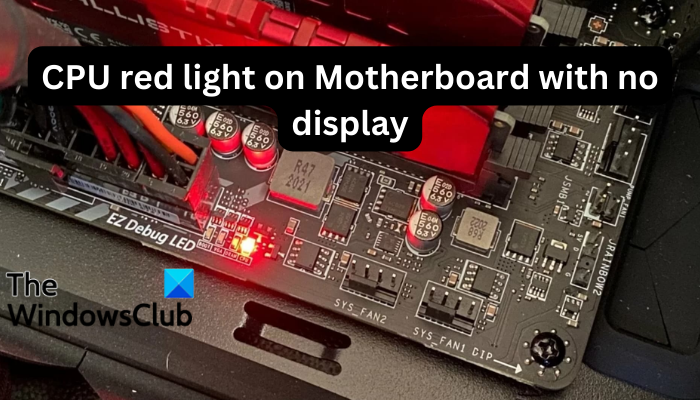
The CPU light on the Motherboard comes in different forms depending on the device causing it, for example, Dram LED light, VGA LED, CPU LED, Boot LED, etc. Some Motherboards might show an orange LED light instead of a red one which will basically mean the same issue. In most cases, the monitor does not display anything; the only indicator is the red LED light.
What are the causes of red CPU light on Motherboard?
The following are the most common causes of CPU red light on the Motherboard without display;
- Overheated CPU. If your computer runs resource-intensive programs, it will overheat, which may lead to a CPU red LED light on Motherboard. To fix an overheated CPU, you can turn off your computer for minutes, fix the programs causing the overheating, or substitute the hot air with the cold one.
- Power cable issues. If the power cables are loose or damaged, you might see a CPU red light. The only way to fix this is by replacing the damaged cables or plugging them in properly.
- Hardware issues. Damaged system hardware can lead to a CPU red LED light which may indicate an internal or external device isn’t working properly. You need to identify the faulty hardware, fix it or replace it.
- Misconfigured BIOS. BIOS settings, if they are wrongly configured, can also trigger red light on the Motherboard. To eliminate this issue, you need to check the BIOS settings and reset the wrong one.
- Faulty CPU or Motherboard. Finally, if the CPU is misplaced or the Motherboard has issues, you will see the red LED light on the Motherboard. You may need to replace or fix the Motherboard or fix the misplaced. Also, you need to check if your Motherboard is getting power or not.
Fix Red CPU light on Motherboard with no display
If you see a red CPU light on your Motherboard with no display, try the following solutions;
- Perform preliminary steps
- Repair or replace the faulty hardware
- Remove and reconnect hard drives
- Check, reset, or update BIOS
- Check RAM and GPU
- Reset and replace the CMOS battery
- Get a new Motherboard
Let us now look at these solutions one by one in detail.
1] Perform preliminary steps
The preliminary steps help in ensuring that other advanced solutions are performed easily. Also, the CPU red light may be caused by simple issues that can be fixed by doing simple initial workarounds. Do the following;
- Give it a few minutes because, at times, the LEDs can light up frantically and goes off after reboot. If the red light stays for more than 2 minutes, then you can treat it as an issue.
- Ensure that the power cables are properly plugged in from the power source to the computer.
- Remove all devices connected to your computer and see if the red light is gone. You can reconnect them back after rebooting your computer if they have no issues.
- Check if every system hardware is compatible with your computer. For example, if your CPU model and Motherboard are not compatible, you will experience errors, and the CPU red LED light will start to blink.
Read: How to keep your Motherboard clean and protected
2] Repair or replace the faulty hardware
Some hardware may trigger the CPU to have an issue, and the LED light will start to blink. If, after doing the preliminary steps, you noticed that a certain device hardware has an issue, you can repair or replace it if it cannot be fixed. Obviously, if you cannot check and repair this hardware, you may need an expert to help you out.
Read: Laptop Caps lock blinking continuously
3] Remove and reconnect hard drives
Storage devices like HDDs or SSDs can trigger the CPU red light on Motherboard if they are not properly seated. To fix this, you need to ensure that these devices are connected and detected by the Motherboard. Then, disconnect all power cables and detach the SATA cables from SSD or HDD. Dust out the drives and reconnect to the SATA tightly.
Fix: MSI monitor not turning on or displaying anything
4] Check, reset, or update BIOS
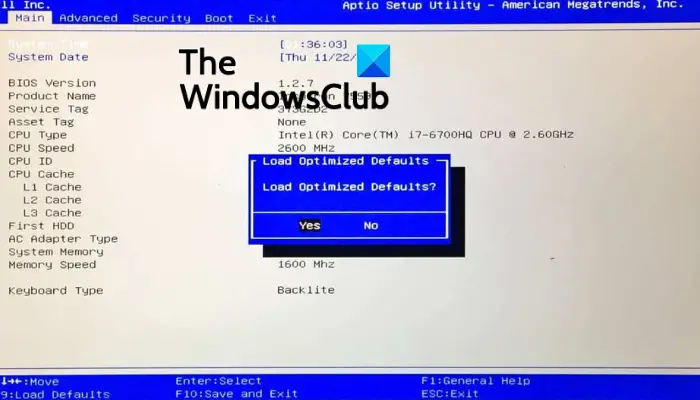
BIOS coordinates hardware and the Motherboard, and if it’s not properly configured, you might get a CPU red LED light. To resolve this issue, you need to reset the BIOS setting or update BIOS.
To access BIOS, press either F2, Del, F12, or Esc immediately after rebooting your computer and hit the key for Load defaults. Click the Save & Exit button and then OK. Allow the system to restart and see if the issue is resolved.
5] Check RAM and GPU
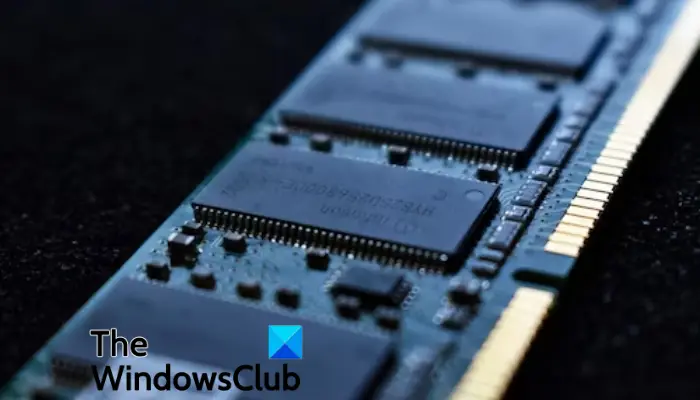
If the computer RAM and GPU are wrongly placed, the Motherboard will show a CPU LED light. To fix this, you need to place the two components properly. Ensure you remove all power cables before you start this method. Open your case and, on the Motherboard, check the RAM ports. Take the RAM (s) out and brush the dust off using a cotton cloth and then place them back tightly.
6] Reset and replace the CMOS battery
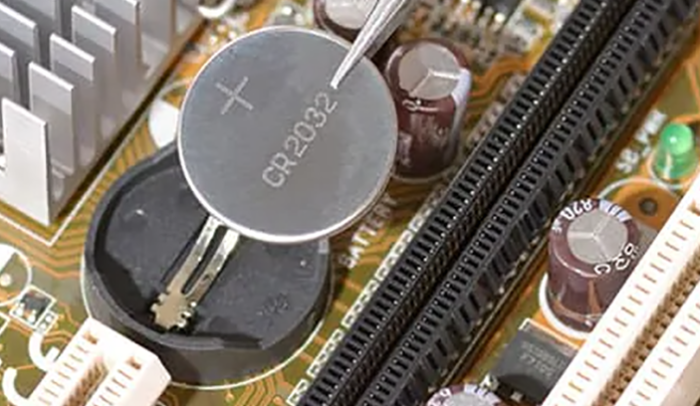
Once the CMOS battery on the Motherboard is faulty or drained, the BIOS will not load and this may trigger the red light on Motherboard. The solution to this is to reset or replace the battery.
To reset the CMOS battery, remove it and let it settle for about 10 minutes Then, reseat it to its place and see if the CPU red light goes off. If this doesn’t fix the issue, remove the CMOS battery and replace it with a new one.
Read: Signs or symptoms of a CMOS battery failure
7] Get a new Motherboard
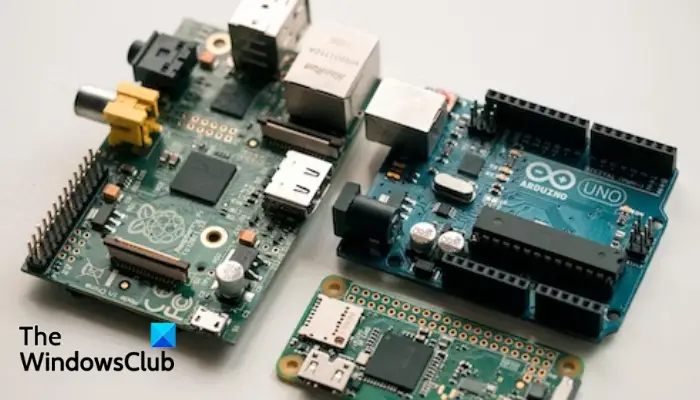
If none of the solutions work, the only last-resort solution is to get a new Motherboard. This can be done if the Motherboard is damaged and nothing can be done to it.
If nothing helps, or you are unsure how to handle some of the steps, you may need to contact a computer repair expert.
Fix: Blue or Red tint on Monitor in Windows
What are the signs of a dead CPU?
The signs of a dead CPU may include frequent BSOD; the computer doesn’t boot, error prompts related to PC processors, overheating, random computer freezes, shutdowns, and reboots, among others. However, these indicators can also represent other issues with your system.
Next: MSI monitor not turning on or displaying anything
What to do if the PC is on but has no display?
There are several ways to resolve if your PC is on but no display. These fixes include testing your monitor, performing a hard reset, checking your hardware, or ensuring that your PC restarts completely. You may also need to verify that the power voltage is set properly, clear BIOS memory, or reconnect the memory component in the system. Finally, if none works, try contacting a computer technician to sort you out.
Leave a Reply